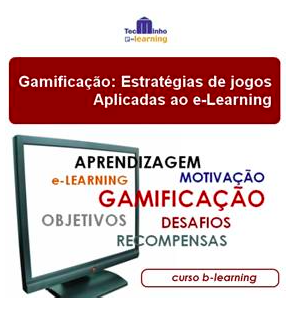A literature review can show what are the sets of game elements and game techniques that are
commonly used in gamified educational environments. Points, badges, leaderboards,
levels and progress bars seem to be the most used elements. Recent research confirms this
notion.
Dicheva et al. (2015) conducted a systematic mapping study covering existing
empirical work in gamification in education. One of the research questions behind this
study was “What game elements have been used in gamifying educational systems?”.
The study considered 34 articles and conference papers published from 2011 and until
the first semester of 2014. Most of the publications occurred in 2013 (19) and 2014
(12). In their study, Dicheva et al., first found what were the most cited game design
principles and game mechanics. These terms are considered here as
“game elements” and “game techniques”, respectively.
The study reached the following
conclusions:
- The most used game elements were points, badges, leaderboards, levels, virtual goods and avatars (this one mentioned only in one publication);
- The most used game techniques were “visible status”, “social engagement”, “freedom of choice”, “freedom to fail”, “rapid feedback” and “goals/challenges”;
- These game elements and techniques were mostly appplied to blended learning courses;
- Only two papers considered K-12 education. The remainning publications concern higher education and training;
- Computer Science and ICT educators are the early adopters of gamification;
- There is a scarce empirical research on the efectiveness of gamification in learning
environments;
- The authors of the reviewed papers share the opinion that gamification has the potencial to improve learning.
Also Seaborn and Fels (2015) surveyed 31 gamified systems and find that the most employed game elements elements and game techniques were points (18), badges (15), rewards (11), leaderboards (11), challenges (6), status (5), progression (3), achievements (3), avatars (3), mini-games (2), roles (2), narrative (1), time pressure (1), and feedback (1).
Farber (2015), refers some "gamification mechanics" (game elements), used in gamification and quest-based learning. Those elements are leaderboards, badges, modding, avatars, in-game economies, game geography and Easter eggs.
Literature reviews revealed that, although several articles and conference papers have been published since 2010, there is still a lack of empirical research on the use and the benefits of gamification. This happens not also in education but also in the other fields of application of the gamification approach. Nevertheless, according to Hamari et al. (2014), education is the most common context found in research.
Regarding gamification for the K-12 education more empirical research is needed. Another important conclusion is that gamification does produce positive effects and benefits and gamification of education, in particular, has a potential impact on learning. This review also shows that there is a set of common game components used in most learning settings.
Hence, the most used game elements and techniques, mainly according to the studies from Dicheva et al. (2015), Seaborn and Fels (2015), Thiebes et al. (2014) and Hamari et al. (2014), are shown in the following table:
References:
Dicheva, D., Dichev, C., Agre, G., and Angelova2, G. (2015). Gamification in education: A systematic mapping study (in press). Educational Technology and Society,, 18(3).
Farber, M. (2015). Gamify Your Classroom: A Field Guide to Game-Based Learning. Peter Lang Publishing, Inc., New York.
Hamari, J., Koivisto, J., and Sarsa, H. (2014). Does gamification work? – a litera- ture review of empirical studies on gamification. In proceedings of the 47th Hawaii International Conference on System Sciences, pages 6–9, Hawaii, USA.
Seaborn, K., Pennefather, P., and Fels, D. (2013). Reimagining leaderboards: Towards gamifying competency models through social game mechanics. In Lennart E. Nacke, K. H. and Randall, N., editors, Proceedings of the First International Conference on Gameful Design, Research, and Applications, pages 107–110, New York. ACM.
Thiebes, S., Lins, S., and Basten, D. (2014). Gamifying information systems - a synthesis of gamification mechanics and dynamics. In Twenty Second European Conference on Information Systems, Tel Aviv.




